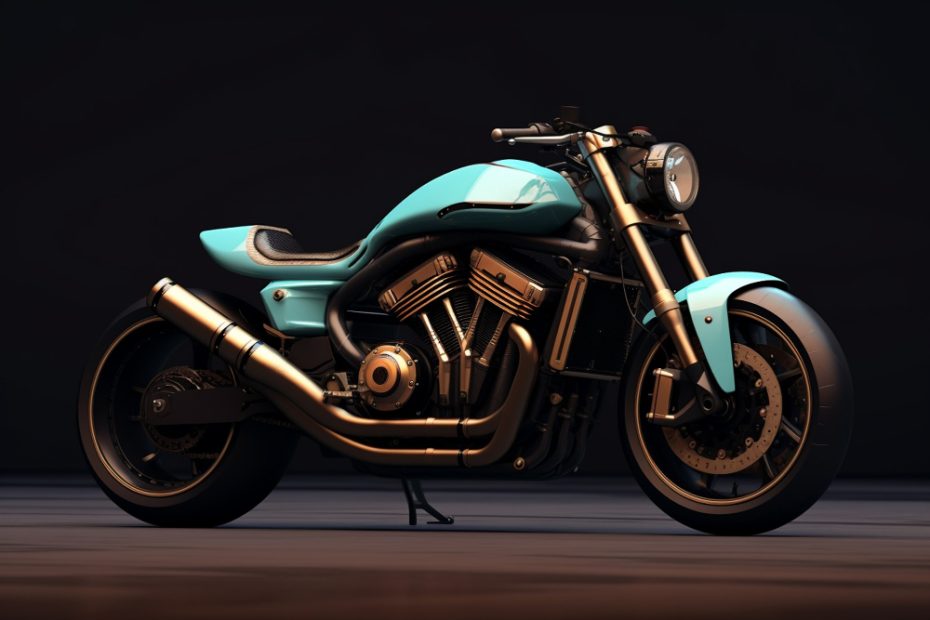How do you reset a motorcycle ECU?
Resetting the Engine Control Unit (ECU) of a motorcycle can be necessary in certain situations, such as when troubleshooting a performance issue or after installing a new aftermarket part. The ECU is responsible for controlling various aspects of the engine’s operation, including fuel delivery, ignition timing, and emission control. Resetting it can help to restore default settings and optimize performance.
Why reset the ECU?
Over time, the ECU accumulates data and adjusts its settings based on your riding habits and the conditions it encounters. While this adaptive learning can be beneficial in some cases, it can also lead to suboptimal performance if the ECU adapts to unusual or faulty readings. Resetting the ECU allows it to start fresh and relearn from scratch, which can help resolve certain issues.
How to reset the ECU
The process of resetting the ECU varies depending on the make and model of your motorcycle. Here are some common methods:
- Disconnect the battery: This is the simplest method and works for most motorcycles. Start by turning off the ignition and removing the key. Locate the battery and disconnect the negative terminal (usually marked with a “-” sign). Leave it disconnected for at least 15 minutes to ensure the ECU is fully reset. Reconnect the battery and start the motorcycle to see if the issue has been resolved.
- Use an OBD-II scanner: Some motorcycles have an OBD-II (On-Board Diagnostics) port that allows you to connect a scanner. These scanners can communicate with the ECU and provide options to reset it. Consult your motorcycle’s user manual or contact the manufacturer to determine if your bike has this feature.
- Reset through the dash display: Certain motorcycles have a built-in procedure that allows you to reset the ECU directly from the instrument cluster display. This method typically involves navigating through the settings menu to find the ECU reset option. Again, refer to your motorcycle’s manual for specific instructions.
When to consider resetting the ECU?
Resetting the ECU should not be the first step when troubleshooting a performance issue. It is recommended to follow a systematic approach and check other potential causes first, such as faulty sensors, clogged fuel injectors, or spark plug issues. If all other avenues have been exhausted or you have installed a new part that requires ECU adaptation, then resetting the ECU may be a valid option.
Note: It is important to remember that resetting the ECU erases any stored trouble codes and may reset certain parameters, such as fuel trims and idle speed. After resetting, the ECU will need some time to readjust and relearn, which may result in temporary changes in engine behavior.
If you are unsure about the process or want to ensure everything is done correctly, it is recommended to consult a professional mechanic or refer to your motorcycle’s service manual.
In conclusion
Resetting the motorcycle ECU can be a useful troubleshooting step or a necessary procedure after installing new parts. By following the appropriate method for your motorcycle, you can reset the ECU and potentially resolve certain performance issues. However, it is crucial to understand that resetting the ECU should only be done after thorough diagnosis of other possible causes and with caution to avoid any unintended consequences.
What Happens When You Reset an ECU on a Motorcycle?
Resetting the Electronic Control Unit (ECU) on your motorcycle can have various effects on its performance and functionality. Before we delve into the specific outcomes of resetting an ECU, let’s first understand what an ECU is and why it may need to be reset.
What is an ECU?
The ECU in a motorcycle stands for Electronic Control Unit. It is a vital component that controls various aspects of the bike’s engine and electronic systems. The ECU receives data from sensors and makes real-time calculations to adjust fuel injection, ignition timing, rev limits, and other parameters to optimize performance.
Why Reset the ECU?
There are a few reasons why you might want to reset the ECU on your motorcycle. One common reason is when you’ve made modifications or added aftermarket parts that require recalibration of the ECU settings. Additionally, if you’re experiencing performance issues or want to start afresh, a reset can help eliminate any stored errors or inconsistent data.
What Happens During a Reset?
When you reset the ECU, it essentially erases all stored data and resets the ECU to its default state. This means that any customized settings or learned adaptations will be erased, and the ECU will revert to the original factory settings. It’s important to note that the process may vary depending on the make and model of your motorcycle.
After a reset, the ECU will begin to relearn various parameters as you ride your motorcycle. This includes adjusting fuel trims, ignition timing, and other settings to suit the current conditions. As a result, you may notice some changes in performance during the initial period after the reset.
Effects of Resetting the ECU
The effects of resetting the ECU can vary depending on factors such as the motorcycle’s make, model, and any modifications you’ve made. Here are some common effects:
- Improved Fuel Efficiency: Resetting the ECU can lead to improved fuel efficiency as the ECU relearns optimal fuel trims based on the current conditions.
- Restored Performance: If your motorcycle was experiencing performance issues due to incorrect settings or sensor errors, a reset can help restore its original performance.
- Reset Error Codes: If there were any stored error codes in the ECU, these will be cleared during a reset. However, if the underlying issue persists, the codes may return.
- Adapting to Modifications: If you’ve made modifications to your motorcycle, such as adding a high-flow air filter or aftermarket exhaust, resetting the ECU can help it recalibrate and optimize the settings for the new components.
Remember that while resetting the ECU can have positive effects, it may not always address underlying issues. If you’re unsure about whether to reset the ECU or if you’re experiencing persistent problems with your motorcycle, it’s best to consult a professional mechanic.
In conclusion, resetting the ECU on your motorcycle can help recalibrate settings, improve fuel efficiency, restore performance, and adapt to modifications. However, it’s important to understand the potential effects and consider consulting a professional if you’re unsure.
Can I replace my ECU myself?
When it comes to replacing your motorcycle’s Electronic Control Unit (ECU), it is possible to do it yourself, but it’s important to consider a few factors before attempting it.
1. Understanding the ECU
The ECU is a crucial component of your motorcycle’s engine system. It controls various functions such as fuel injection, ignition timing, and performance optimization. Replacing the ECU requires technical knowledge and familiarity with your specific motorcycle model.
2. Warranty and Compatibility
Before replacing the ECU, check if your motorcycle is still under warranty. If it is, replacing the ECU yourself might void the warranty. Moreover, not all ECUs are compatible with every motorcycle model, so ensure that the replacement unit is designed for your specific bike.
3. Technical Expertise
Replacing the ECU involves accessing and disconnecting various electrical connections, which can be complex and require specialized tools. If you’re not confident in your technical skills, it’s advisable to seek professional help to avoid causing further damage.
4. Programming and Calibration
Once the new ECU is installed, it will need to be programmed and calibrated to ensure proper functionality. This step typically requires diagnostic equipment and software that may only be available to authorized dealers or trained technicians.
While it is possible to purchase aftermarket ECUs that come pre-programmed, they may not offer the same level of performance optimization as OEM (Original Equipment Manufacturer) units.
Note: Always consult your motorcycle’s manufacturer guidelines or a professional technician for guidance on specific replacement procedures and compatibility.
If you decide to replace the ECU yourself, it’s essential to follow these steps:
- Research and identify the correct ECU for your motorcycle model.
- Ensure you have the necessary tools and equipment.
- Disconnect the battery to avoid any electrical mishaps.
- Remove the old ECU by following the manufacturer’s instructions.
- Install the new ECU carefully, ensuring all connections are secure.
- Reconnect the battery and test the functionality of the new ECU.
If you encounter any difficulties or are unsure during the replacement process, it’s best to seek professional assistance to avoid potential damage to your motorcycle’s electrical system.


